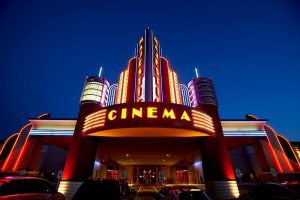Cinema in Panama has a rich history, and an even richer future when you look at how the landscape of films has been shaping up over the past 20 years. While it may not be the first place that comes to mind when thinking about cinema, Panama has made significant contributions to the world of movies, both in front of and behind the camera. In this blog post, we will delve into the history of cinema in Panama, highlight some prominent Panamanian movies and actors, and explore the impact that Panamanians have had on movies and cinema culture.
A History of Cinema in Panama
The history of cinema in Panama can be traced back to the early 1900s when the first movie theaters were established in Panama City. The silent film era captured the imagination of Panamanians, and soon, local productions began to emerge. One of the earliest notable Panamanian films was “Guna Yala” (1937), a documentary that portrayed the lives and traditions of the indigenous Guna people. This film marked the beginning of a journey to represent Panama’s diverse cultural heritage on the silver screen.
In the following decades, Panamanian cinema experienced its ups and downs, with limited resources and the dominance of Hollywood films posing challenges. However, Panamanian filmmakers and actors persevered, striving to tell their unique stories. “La Murga” (1958), directed by Manuel Octavio Gómez, was one of the first feature-length Panamanian films. It shed light on the vibrant Carnival traditions of Panama, capturing the essence of the country’s cultural celebrations.
As time went on, Panamanian cinema began to gain international recognition. “Chance” (1998), directed by Abner Benaim, garnered critical acclaim at film festivals worldwide. The film explored the journey of a young Panamanian boxer striving to make a name for himself while facing personal and societal obstacles. “Chance” not only demonstrated the talent of Panamanian filmmakers but also shed light on social issues affecting the country.
Modern Cinema in Panama
In recent years, Panama has seen a surge in cinematic productions. “Diablo Rojo PTY” (2019), directed by Sol Moreno, brought the popular urban legends surrounding the Diablo Rojo (Red Devil) buses to life. This horror film showcased the talent and creativity of Panamanian filmmakers in the genre.
Apart from movies, Panamanian actors have also made their mark on the international stage. One prominent Panamanian actor is Rubén Blades, a versatile performer known for his work in both film and music. Blades gained recognition for his role in “The Milagro Beanfield War” (1988) and “Predator 2” (1990). His talent and charisma have opened doors for other Panamanian actors, inspiring them to pursue careers in the film industry.
Another noteworthy Panamanian actor is Daniah De Villiers, who made her debut in the international film scene with “Mia and the White Lion” (2018). Her performance as the lead character showcased the talent and potential of Panamanian actors, earning her praise and opportunities for future projects.
A Global Impact
The impact of Panamanians extends beyond individual achievements. They have played a vital role in shaping cinema culture within the country. The International Film Festival of Panama, founded in 2012, has become a significant platform for showcasing local and international films. This annual event attracts renowned filmmakers, industry professionals, and movie enthusiasts from around the world, fostering a sense of community and appreciation for cinema in Panama.
In recent years, the Panamanian government has also shown support for the film industry, recognizing its potential for economic growth and cultural preservation. Initiatives such as tax incentives and grants for local productions have encouraged the development of Panamanian cinema and the exploration of diverse narratives.
Today, modern cinema in Panama reflects the country’s evolving identity. Filmmakers are tackling a wide range of topics, from historical dramas to social issues, while also embracing new genres and styles. With advancements in technology, Panamanian filmmakers now have greater access to resources, enabling them to tell their stories with enhanced visuals and production values.
Cinema in Panama is not only a means of entertainment but also a powerful tool for cultural expression and social commentary. It serves as a platform to celebrate Panama’s diverse heritage, shedding light on its history, traditions, and contemporary challenges. The contributions of Panamanian filmmakers and actors continue to shape the cinematic landscape, inspiring future generations to explore their own narratives and make their mark on the world stage.
In conclusion, cinema in Panama has a rich history that spans over a century. From the early days of silent films to the modern era, Panamanian filmmakers and actors have made significant contributions to the industry. The impact of Panamanians can be felt both within the country and internationally, through compelling movies, talented actors, and the promotion of cinema culture. As Panama’s film industry continues to thrive, it will undoubtedly continue to captivate audiences and provide a unique lens through which to view the rich tapestry of Panamanian culture. For more info about Panama, or how you can relocate to Panama, contact us here now!
